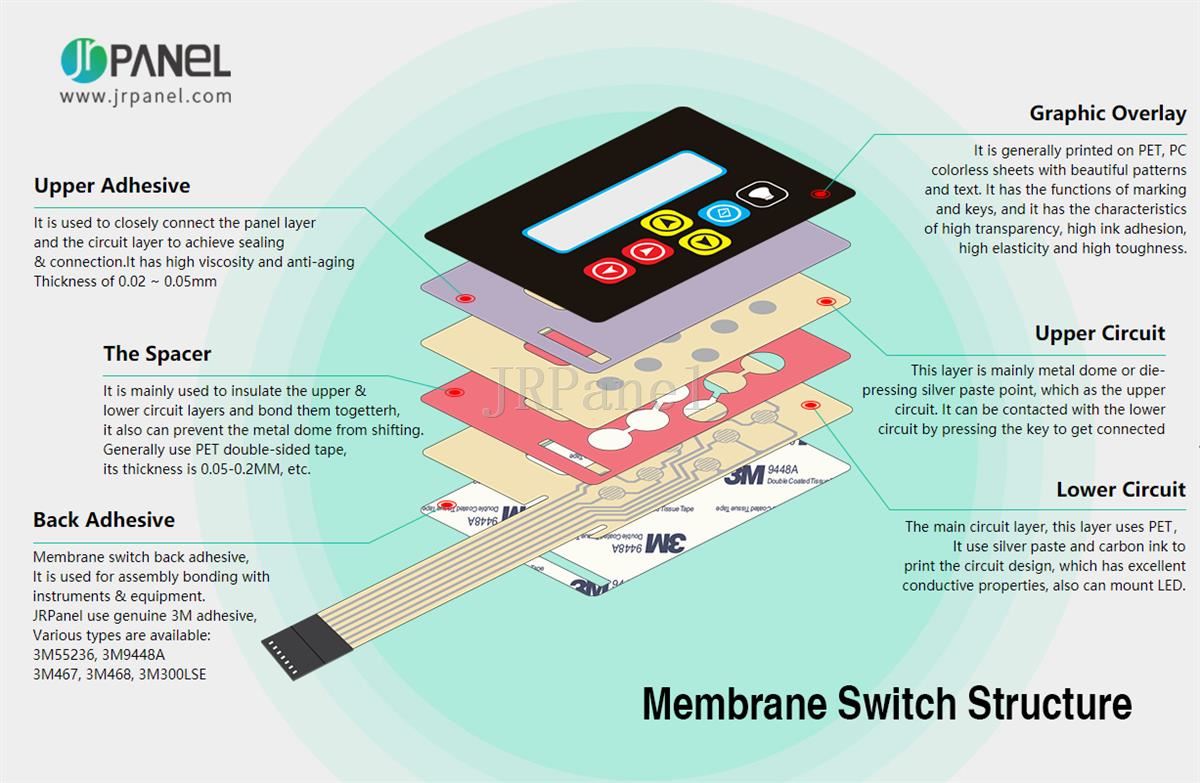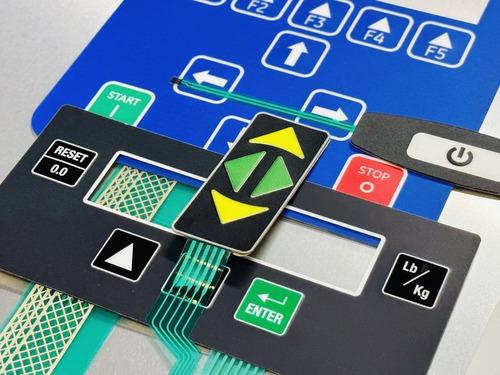The Ultimate Resource on Membrane Switches: Layout, Performance, and Applications
Membrane layer changes offer as an appealing intersection of design and capability, playing a pivotal role in contemporary interface across numerous fields. This source unpacks the essential elements that add to their efficiency, consisting of visuals overlays and circuit traces, while additionally clarifying the systems behind their pressure activation. As we discover the varied applications of membrane layer buttons, it ends up being evident that their flexibility and resilience are crucial in settings varying from health care to consumer electronics. The subtleties of their layout and operational principles may expose even deeper insights worth thinking about.

Comprehending Membrane Layer Switches
Membrane layer buttons are a kind of customer interface innovation commonly made use of in different digital devices, identified by their thin, versatile design and capability. These switches are composed of multiple layers that include graphic overlays, glue layers, and circuitry, making it possible for a reliable and compact user interface for customers. They can be located in devices, medical gadgets, and commercial control panels, supplying a trusted method for user communication.
Among the key benefits of membrane layer buttons is their capacity to resist contaminants such as dust and dampness, making them ideal for settings where durability is vital. Their low-profile design enables smooth integration right into different applications, while the personalized graphic overlays improve user experience by supplying clear visual responses. Furthermore, membrane layer switches can fit a selection of innovations, such as tactile responses and backlighting, further boosting their usability.
The manufacturing procedure for membrane switches generally entails display printing, lamination, and die-cutting strategies, ensuring precision and consistency in production. In general, membrane switches stand for a effective and versatile option for contemporary digital tools, incorporating functionality with aesthetic allure in interface style.
Key Parts and Style Aspects
A range of crucial parts and style components come with each other to create a reliable membrane button. At the core, the graphic overlay serves both practical and visual objectives, providing an easy to use user interface while shielding interior components from ecological factors. The option of products, generally polyester or polycarbonate, influences longevity and responsive feedback.
Underneath the overlay, the glue layer ensures the button sticks firmly to the substrate, which can be glass, metal, or plastic. The spacer layer is crucial, as it maintains the needed space between the circuit and the overlay layers, allowing for reliable actuation. Membrane Switches. Circuit traces, generally made from conductive ink or adhesive, are printed on an adaptable substrate, allowing electrical signals to be transferred when pressure is used
Style considerations also consist of the plan of responsive domes or embossing that provide physical feedback to the individual, enhancing the general experience. Additionally, the format and spacing of the buttons should be maximized for simplicity of use, guaranteeing that customers can browse the user interface with ease. In general, these components and style aspects function synergistically to produce a reliable, practical membrane button customized to particular applications.
Functionality and Operation Mechanism
At the heart of efficient performance for membrane switches over lies their functional device, which promotes user interaction via a straightforward yet efficient layout. These buttons operate the principle of pressure activation, where a user applies force to an assigned area of the switch (Membrane Switches). This action compresses the layers of the button, completing an electrical circuit that sends a signal to the linked gadget
The building and construction typically includes a top graphic layer, an adhesive spacer layer, and a bottom circuit layer, which jointly form a robust interface. When pressure is applied, the top layer falls down against the bottom circuit layer, enabling conductive traces to connect. This design not see here now just makes it possible for clear responsive responses but additionally ensures toughness and integrity, as the switches are usually resistant to dirt and dampness.
Moreover, the flexibility of membrane changes enables combination with various technologies, consisting of LED indications and microcontrollers, enhancing their performance. By providing a streamlined user interface that decreases mechanical wear, membrane switches over continue to be a favored choice in applications varying from customer electronics to industrial tools, ensuring optimal efficiency and customer satisfaction across varied atmospheres.
Sorts Of Membrane Switches

Another significant group is lit up membrane buttons, which include backlighting to boost exposure in low-light problems. These buttons are frequently used in control panels and dashboards where clear visibility is important.
Furthermore, there are personalized membrane layer changes designed to satisfy details dimensional, visual, and useful demands. These personalizations can include distinct forms, shades, and layouts, permitting smooth assimilation into different gadgets.

Applications Across Different Industries
How do membrane buttons boost functionality throughout varied sectors? In the medical market, membrane buttons play a crucial duty in tools such as diagnostic equipment and person monitoring systems, where integrity and simplicity of cleansing are critical.
In the automotive industry, membrane layer buttons are typically utilized in control panels and control board, offering intuitive controls that boost motorist safety and security and comfort. The consumer electronics field likewise benefits from their light-weight and customizable features, allowing smooth designs for smart devices and home appliances.
Moreover, membrane layer switches discover applications in commercial automation, where they add to efficient equipment procedure and tracking systems. Their resistance to dirt and wetness makes certain functionality sought after conditions (Membrane Switches). Furthermore, the food and beverage industry utilizes membrane layer buttons for tools control, where health and durability are crucial
Verdict
In verdict, membrane layer switches over represent an essential innovation in individual interface technology, defined by their distinct layout and performance. The flexibility of membrane layer switches over promotes anchor their application across diverse markets, from medical devices to customer electronic devices.
Membrane layer switches offer as an interesting junction of style and performance, playing a critical duty in modern-day user interfaces across numerous markets.Membrane layer buttons are a type of individual interface innovation commonly made use of in various digital devices, defined by their thin, flexible style and page performance.At the heart of reliable functionality for membrane switches over exists their operational mechanism, which assists in customer communication with an easy yet reliable design. These buttons operate on the principle of stress activation, where an individual applies force to an assigned area of the button.In final thought, membrane layer switches represent a vital advancement in individual interface innovation, defined by their distinct style and capability.